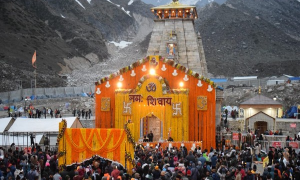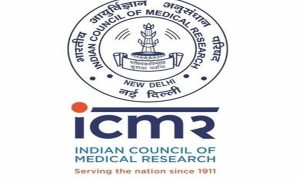In a ground-breaking discovery, Palm manuscripts from the 18th Century titled Gnanamuyarchi, have been found in an Armenian monastery in Northern Italy. The findings shed enough light on the rich history and cultural exchanges between different regions during that time.
The discovery was made by Tamil Bharathan, a doctoral scholar of the Special Centre for Tamil Studies in Jawaharlal Nehru University (JNU), who was allowed access to the manuscripts. The manuscripts were safely stored within the monastery.
According to Bharathan, he was only allowed to read the manuscripts after days of persuasion. He was in Italy after being invited to participate in a seminar on Greek Paleography at the headquarters of the Hellenic Institute of Byzantine and Post-Byzantine Studies in Venice.
To uncover more about the manuscripts, Bharathan sought the help of Margherita Trento, a professor who has studied the history of the literary and social techniques employed by Roman Catholics to localise Christianity in early modern Tamil Nadu. According to her, it could be a copy of the first translation of Ignatius’ Spiritual Exercise in Tamil.
According to Professor Trento, the translation is most likely by Michele Bertoldi, known in Tamil as Gnanaprakasasamy. This is a prose text from the early 18th Century (likely the 1720s) and has been printed several times in the 19th Century by the Mission Press in Puducherry.
As per Bharathan, the library had categorised the manuscripts as ‘Indian Papyrus Lamulic Language–XIII Century’, and the authorities were not aware that it had been written in Tamil. Those in charge of the monastery are of the opinion that the Armenians in Chennai could have brought the manuscripts to Italy. It is important to note that Tamil is recognised as the oldest language in the world.
Bharathan has taken up the task of cataloguing the manuscripts and also plans to visit Roja Muthiah Library in Chennai since it also has a copy of the work in its possession.
Importance of the Finding
These palm manuscripts are of utmost importance in preserving historical and cultural knowledge. They offer valuable insights into the time period they originate from, providing a firsthand account of the social, literary, and religious practices during that era. The manuscripts are written in Tamil, showcasing the influence of the language and its spread beyond its homeland. Further, it also offers scope of more research into the area.
In a ground-breaking discovery, Palm manuscripts from the 18th Century titled Gnanamuyarchi, have been found in an Armenian monastery in Northern Italy. The findings shed enough light on the rich history and cultural exchanges between different regions during that time.
The discovery was made by Tamil Bharathan, a doctoral scholar of the Special Centre for Tamil Studies in Jawaharlal Nehru University (JNU), who was allowed access to the manuscripts. The manuscripts were safely stored within the monastery.
According to Bharathan, he was only allowed to read the manuscripts after days of persuasion. He was in Italy after being invited to participate in a seminar on Greek Paleography at the headquarters of the Hellenic Institute of Byzantine and Post-Byzantine Studies in Venice.
To uncover more about the manuscripts, Bharathan sought the help of Margherita Trento, a professor who has studied the history of the literary and social techniques employed by Roman Catholics to localise Christianity in early modern Tamil Nadu. According to her, it could be a copy of the first translation of Ignatius’ Spiritual Exercise in Tamil.
According to Professor Trento, the translation is most likely by Michele Bertoldi, known in Tamil as Gnanaprakasasamy. This is a prose text from the early 18th Century (likely the 1720s) and has been printed several times in the 19th Century by the Mission Press in Puducherry.
As per Bharathan, the library had categorised the manuscripts as ‘Indian Papyrus Lamulic Language–XIII Century’, and the authorities were not aware that it had been written in Tamil. Those in charge of the monastery are of the opinion that the Armenians in Chennai could have brought the manuscripts to Italy. It is important to note that Tamil is recognised as the oldest language in the world.
Bharathan has taken up the task of cataloguing the manuscripts and also plans to visit Roja Muthiah Library in Chennai since it also has a copy of the work in its possession.
Importance of the Finding
These palm manuscripts are of utmost importance in preserving historical and cultural knowledge. They offer valuable insights into the time period they originate from, providing a firsthand account of the social, literary, and religious practices during that era. The manuscripts are written in Tamil, showcasing the influence of the language and its spread beyond its homeland. Further, it also offers scope of more research into the area.




























 WhatsApp us
WhatsApp us